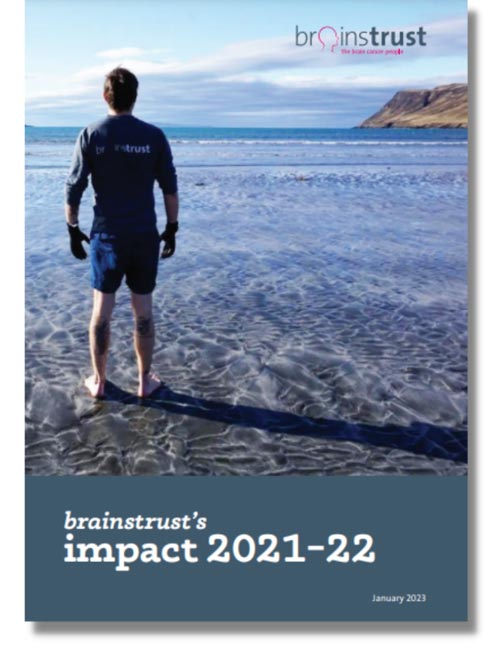Two news items doing the rounds this week. One is the Cancer Drugs Fund (CDF); the other is the Cancer Task Force. Both are responding to an agenda which desperately needs clarification, a dose of common sense and a little less ego.
What do these changes mean for you, our brain cancer community?
Both are about securing the best outcomes for people with cancer. We all want this. The new Cancer Task Force is tasked with finding new ways of improving cancer services, identifying what needs to be done better in future by studying the kind of care patients get today. By this summer it will publish a five-year plan that aims to deliver:
- Better prevention of cancer
- Swifter cancer diagnosis
- Better treatment, care and aftercare for all cancer patients.
Also announced at the same time as the Task Force, is the “ACE Programme”, which Cancer Research UK is leading jointly with NHS England and Macmillan. This programme has identified more than 60 potential projects to address late diagnosis. These will be led locally by NHS teams and include:
- Giving GPs direct access to diagnostic tests
- Working with people at high risk of cancer to help spot the disease early
- Creating bespoke clinics where unexplained symptoms can get a quick diagnosis
- Improving multi-disciplinary diagnostic centres
- Boosting the role of pharmacists who keep track of regular prescriptions and may be able to refer patients for tests
- Allowing GPs to overrule NICE criteria at their discretion
- Enabling patients to book their own appointments for a diagnostic test.
Promising, but only if we can make sure the needs of brain tumour patients are met
All this sounds promising and quite a big step in the right direction – if it works and if the specific needs of the brain tumour patient are met. It’s our job to make sure that these are explicit in the ACE programme so we will be bending Harpar Kumar’s ear at CRUK. Thanks to you, the brain tumour community, we know what these needs are and we are working on what gold standard care and aftercare looks like.
Changes to the Cancer Drugs Fund
And now the Cancer Drugs Fund. “This is a mess” says Helen Bulbeck, brainstrust’s Director of Policy and Services. “It was only ever intended to be short term and then overtaken by value-based drug assessment. This didn’t happen because actually nobody knows what value means. Nor how it can be identified, measured, delivered or evaluated. It needs to be researched first. Then the political landscape changed and so it was ignored. By everyone.”
And what happens when a problem is ignored? It gets bigger. So the fund has now overspent by £100 million, too many people have abused the Fund (politicans, pharmas are just two) and some poor person has to clear up the mess. Hence 42 drugs being cut from the CDF. And who reaps the fall out? The cancer community. It will come as no surprise though to see that brain cancer doesn’t feature at all in the CDF.
“BUT”, continues Helen, “we too need to change our mindset. There needs to be a complete review of cancer drug pathways so that patients get the drugs they need but these need to be drugs that do more than offer just a few weeks of extra life but at very poor quality because of side effects. There needs to be new research models and the public too have a responsibility to be realistic in their expectations”. Avastin is a case in point (which is one of the 42 drugs pulled for breast and colorectal cancers):
https://www.brainstrust.org.uk/news-detail.php?id=408&year=2014&newscat=4
And Dr Richard Smith, past editor of the BMJ, has stated:
‘I do think, however, that we might get a better return on our investment by spending less on cancer and more on the many other areas of research—like neurological and mental health issues, and unglamorous areas of research such as health systems and nursing. We would certainly achieve very much more if we were to invest in making sure that everybody in the world got simple, cheap, evidence based treatments rather than in novel cancer drugs, many of which extend life by a matter of mere weeks and are hugely expensive’
Richard Smith ‘Death: a response.’
Until this is done, the Cancer Drugs Fund is unsustainable and a political anomaly. And everyone, including the brain cancer community, needs to think differently about this.
But it isn’t going to happen this side of the next General Election.
If you’d like to share your views, why not drop us a line? hello@brainstrust.org.uk






